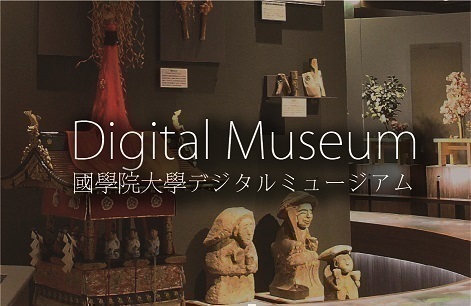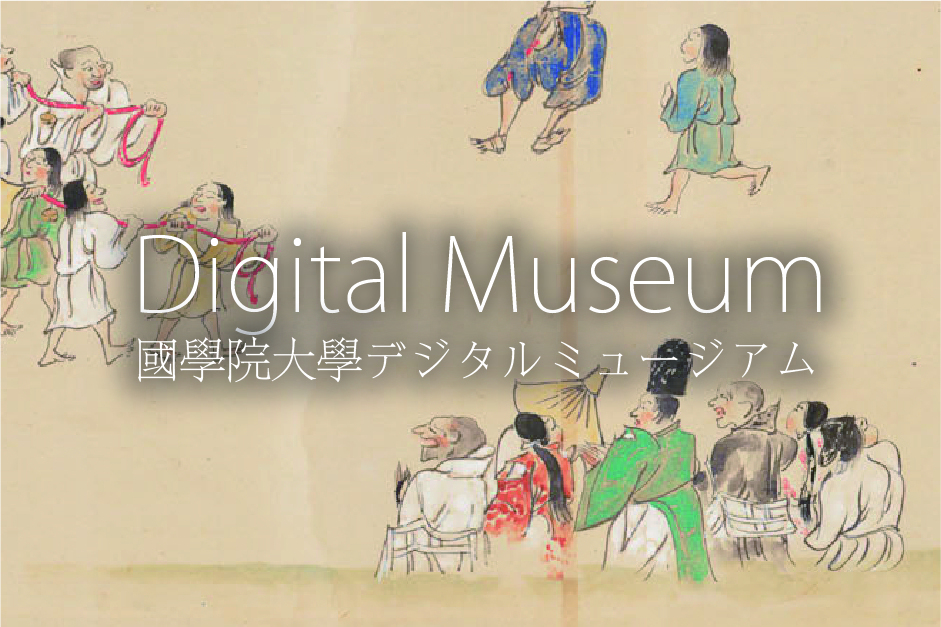- トップ
- Encyclopedia of Shinto
- Suika Shintō
Encyclopedia of Shinto
| Main Menu: | |
| Links: |
詳細表示 (Complete Article)
| カテゴリー1: | 8. Schools, Groups, and Personalities |
|---|---|
| カテゴリー2: | Medieval and Early Modern Schools |
| Title | Suika Shintō |
| Text | The form of Shinto advocated by Yamazaki Ansai, a Confucian-Shintoist (see Juka Shintō) of the early Edo period. Suika Shintō was a form of Confucianist Shintō that attempted to compiled all Shinto theories since medieval times, and until the appearance of National Learning (kokugaku), it spread widely as a theoretical prop for Shinto among court nobility, samurai and Shintō priests. Earlier a Buddhist acolyte, Ansai returned to secular life in his youth, studied Neo-Confucianism of the Shikoku-school (kainan gakuha) under the patronage of Nonaka Kenzan, chief retainer (karō) of Tosa domain, and opened a place for lecture meetings in Kyoto. His Neo-Confucianist research did not depend on the Ming Dynasty commentaries Shisho taizen, Gokyō taizen and Seiri taizen (textbooks on the Chinese Classics for higher civil service examinations in old-time China), which were in general use at that time, but instead attempted to expound the doctrines of Zhu Xi (Jp. Shushi, 1130-1200) directly from original texts such as Shushi gorui and Shushi bunshū . He believed that in this way he could comprehend not only the teachings of Zhu Xi, but also those of Confucius, and by extension those of the ancient sages Yao, Shun, and Yu. Based on the objective of "transmitting, not inventing" (nobete tsukurazu) he investigated Zhu Xi's literary work in a strictly comparative way and endeavored to elucidate his thoughts directly and not according to others' commentaries. In 1665 at the age of 48, Ansai was employed by Hoshina Masayuki, at that time guardian of the fourth Tokugawa Shogun Ietsune. He served for eight years until Masayuki's death, not as a Confucian scholar retained by a feudal lord (hanju) but as a special teacher receiving treatment of a guest (hinshi), and he exerted much ideological influence on Aizu domain in this way. Ansai was thus exceedingly well-known as a Confucianist, but at the same time he also was a Shintoist. Ansai, who had learned through Neo-Confucianism that Principle (ri) is the cosmic Absolute (uchū yuiitsu) and that all human beings and things without distinction are endowed with it, came to turn his attention also to the question of what this ri corresponds to in Japan. He became convinced that ri corresponds in Japan to the "mind-kami" (shinshin) of the deity Amenominakanushi, and resides within the human heart (mind). According to Confucianism, three processes of development are proposed: the person with an innate disposition toward sagacity (seichi ankō no hito), who understands the way of humanity and morality by nature and puts them into practice at ease (a sage); a learned and wise person (gakuchi rikō no hito), who according to scholarship understands things by experience and puts them into practice; and a person who puts great exertion into every conduct and after taking great pains at the end understands the true reason of things and puts them into practice (konchi benkō no hito). Through whichever process one passes, however, when it is carried out diligently, the end is the same, namely, one becomes equivalent to a sage. Ansai sought this teaching in the deeds of the kami in Nihon shoki's chapter on the Age of Gods, and held that Amaterasu is a sage with the innate disposition of sagacity (seichi ankō no seijin), Sarutahiko is a learned sage (gakuchi rikō no seijin), whie Susanoo and Ōnamuchi are sages who took great pains and put great exertion into their conduct (konchi benkō no seijin), and that all of them are in unity with Amaterasu's virtues. In the same way, human beings should likewise discipline themselves and cultivate their minds so as to become united with that great deity's virtue. Based on this concept, the Way is explained in Suika Shintō as the "Way of the sun kami" (Amaterasu ōmikami), while the Teaching is described as the "guidance of Sarutahiko." Further, Ansai applied to Shinto the discipline of veneration or reverence obtained from Neo-Confucianism, and sought to discover that reverence in invocative prayer and the virtue of "sincerity" (shōjiki or seichoku). He held that in order to become united with Amaterasu's vitue, one had to pray wholeheartedly to the deities and maintain the purity of a serene mind and body. He believed that only by starting from such behavior would one achieve union with the kami. This is the meaning of the expression, "the deities deign to descend in response to prayer, and divine protection is granted in response to rectitude" (shinsui kitō , myōga seichoku), which is adopted from the "divine commission" given Ninigi by Amaterasu (see shinchoku), and especially esteemed within Suika Shintō. "Suika," the miraculous title (reishagō) that Ansai obtained from Yoshikawa Koretaru at the time of his initiation into Yoshida Shintō, was adopted from this rescript (chokugo), and it is said that Ansai himself requested this title. Suika Shintō first of all teaches the tradition of the "unity of deity and man" (tenjin yuiitsu) together with the tradition of prudent propriety (tsutsushimi). Without knowledge of these two teachings, one can understand neither the age of gods nor the unchanging continuity from the age of gods to the age of humans, and moreover, one cannot grasp the concept that the age of humans is the age of the gods, nor the concept of "human beings revered as living shrines" (seishi). Further, Ansai describes the relation between sovereign and subject as follows: namely, Amaterasu is the sun deity and at the same time also the imperial ancestor and, on that basis, the embodiment of the union of deities and men. Consequently, the Way of Amaterasu ōmikami (Shintō)—namely, the way of Japan—is, in short, the way of the emperor. In fact, precisely in accordance with the "divine commission to rule as eternal as heaven and earth" (tenjōmukyū no shinchoku), both Japan's national polity (kokutai) and the three imperial regalia (sanshu no shinki), which were transmitted at the time of the descent of the heavenly grandchild (tenson kōrin) from Takama no hara (the Plane of High Heaven), are unchanging, and the emperors, who take receipt of them, continue in an unbroken line. Ansai thus explained that the relation between sovereign and subject is also coeval with the age of gods, with the result that way of sovereign and subject must be absolute. In general, Confucianists and Shintoists at that time also accepted that an emperor who showed signs of depravity could be replaced by a virtuous imperial prince, but Ansai was extremely fearful of such theories, believing they would lead to regicide and revolution. For Suika Shintō, which esteems the ways of conformity of loyalty and filial piety and of preserving the union of sovereign and subject, it was absolutely unacceptable to use human intervention to change the relation between sovereign and subject, coeval with the divine age. It attached extreme significance to Ise Shintō's teaching of "sasa uu (leave the left as left, and right as right)" and "gengen ponpon (leave the origin as origin and the root as root)." Therefore, in case such a situation should arise, it is imperative that subject preserve this principle even at the risk of their own lives. He held that all deities, all human beings, and all other beings owed a dept of obligation for receiving the benevolent blessing (okage) of Amaterasu (the benevolent blessing of heaven and the benevolent blessing of the sun). The "secret transmission of the shrine" (himorogi iwasaka no den), which together with the "secret transmission of the three imperial regalia" were most highly treasured within Suika Shintō, meant nothing less than this notion of the way of preserving the unity of sovereign and subject. This is not merely the teaching of the single leader transmitting the way as in Yoshida Shintō, but a teaching to be shared by all people, and it may be said that Ansai wrote his Nakatomi no harae fūsuisō to transmit that teaching. Ansai considered Shinto something transmitted since the divine age together with Japan's national polity (kokutai) and which was to be shared by all people; in that sense, it can be said he liberated Shinto from its previous form as a closed transmission of limited Shinto lineages. After Ansai's death, most of his teaching was transformed into a secret esoteric doctrine by Tamaki Masahide, Atobe Yoshiakira and others, but on the other hand, these trends were also criticized by Wakabayashi Kyōsai out of fear that Ansai's real intentions would be lost. The court noble Ōgimachi Kinmichi of the Urin house became the successor of Suika Shintō after Ansai's death. Disciples Ueda Gonbai and Shibukawa Harumi had hoped for Tsuchimikado Yasutomi, while Tani Jinsan and Wakabayashi Kyōsai later expressed the same in regard to Asami Keisai, but according to Ansai's wish the succession was passed to Kinmichi. This decision was based on Ansai's intention that propagating Suika Shintō to the emperor was of ultimate importance. From Ansai's last years throughout the middle of the Edo period Suika Shintō exerted strong influence on the Shinto world, but in time the rise of Kokugaku (National Learning) and Fukko Shintō (Restoration Shinto), resulted in Suika Shintō's becoming the target of criticism, and it thus waned. It must not be forgotten, however, that it played an important role in preparing the way for the later development of Kokugaku and Fukko Shintō. See also Yamazaki Ansai. -Nishioka Kazuhiko |





